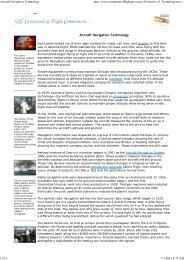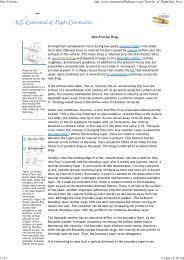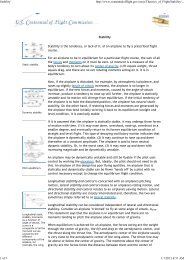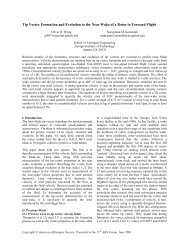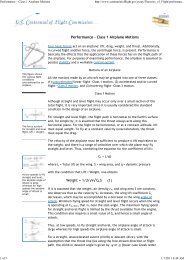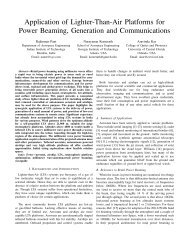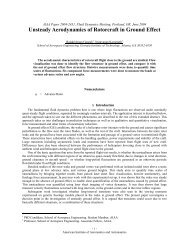Boeing-University Relations - A Review and Prospects for the Future
Boeing-University Relations - A Review and Prospects for the Future
Boeing-University Relations - A Review and Prospects for the Future
Create successful ePaper yourself
Turn your PDF publications into a flip-book with our unique Google optimized e-Paper software.
technology. Thrust into sudden <strong>and</strong> uncritical prominence by ABET <strong>and</strong> industry pressure in <strong>the</strong>‘90s, <strong>the</strong> capstone design course in its traditional <strong>for</strong>m became in some sense a millstone around<strong>the</strong> necks of <strong>the</strong> faculty who wanted to make real advancements, by setting a ra<strong>the</strong>r low bar oftechnical competence <strong>for</strong> students. Capstone courses are immensely popular amongundergraduates as <strong>the</strong>y impart “real-life” role-playing opportunities. The downside is that <strong>the</strong>actual level of thinking, innovation <strong>and</strong> hard technical problem-solving that occurs in <strong>the</strong>secourses is not high, as attested by alumni who call it <strong>the</strong> easiest (while most time-consuming <strong>and</strong>“fun”) course in <strong>the</strong> curriculum † . Technology <strong>and</strong> <strong>the</strong> emphasis on teamwork have served to helpbridge <strong>the</strong> disconnect between <strong>the</strong> upper-level courses <strong>and</strong> <strong>the</strong> capstone design course. The useof large computer programs <strong>for</strong> design optimization required students to be organized into largerteams. However, <strong>the</strong> efficiency of such teams in <strong>the</strong> learning process remains a big questiontoday. Radical ef<strong>for</strong>ts have included a single design project vertically integrated through <strong>the</strong> 4-year curriculum, but generally, faculty have tried to address this concern outside <strong>the</strong> regularcurriculum through “Design-Build-Fly” 10 or research-design team experiences.Systems EngineeringThere is huge apparent dem<strong>and</strong> <strong>for</strong> people with “Systems” training, but no clear consensus hasemerged regarding <strong>the</strong> balance between core fundamentals <strong>and</strong> systems engineering in <strong>the</strong>undergraduate curriculum. At <strong>the</strong> same time, Systems education has blossomed at <strong>the</strong> graduatelevel with many tools <strong>and</strong> techniques being developed, <strong>and</strong> common threads being refined intoresearch areas in Systems Design. Presumably, this will result in good undergraduate textbooksor o<strong>the</strong>r pedagogical resources <strong>and</strong> experience being developed, as prelude to incorporating <strong>the</strong>seconcepts in <strong>the</strong> core curriculum.Independent problem-solving opportunitiesA major cultural change that occurred somewhat independently of industry ef<strong>for</strong>ts, is <strong>the</strong>reduction of institutional resistance to <strong>the</strong> idea of involving undergraduates in research. TheNSF’s Division of Experimental <strong>and</strong> Laboratory-Oriented Studies (DELOS) deserves part of <strong>the</strong>credit <strong>for</strong> this, as proposal writers sought innovative ways of involving undergraduates in uniqueexperiential learning opportunities. The ILI/LLD programs led <strong>the</strong> way in enablingundergraduate involvement, followed by <strong>the</strong> REU (research experiences <strong>for</strong> undergraduates)programs, <strong>and</strong> supplemental funding <strong>for</strong> NSF grantees to involve undergraduates. The result wasthat enthusiastic <strong>and</strong> determined faculty were able to ward off <strong>the</strong> pressures to “spend more timewith graduate students <strong>and</strong> less with undergraduates”, since undergraduate research was clearlybringing projects. However, <strong>the</strong> pioneering experiments to bring undergraduates into researchprograms were driven by need to find <strong>and</strong> train excellent future graduate students, <strong>and</strong> to providebetter employment versatility during <strong>the</strong> aerospace recession of <strong>the</strong> early 90s. The implications of† This point was proven when much of <strong>the</strong> content of <strong>the</strong> first traditional aircraft design course at Georgia Tech wasre-packaged to be taught <strong>and</strong> learned very successfully by first-semester freshmen who had taken no engineeringcourses at all. The intent here was to enable <strong>the</strong> senior design course to get much deeper into innovation <strong>and</strong>analysis, but <strong>the</strong> potential <strong>for</strong> vertical <strong>and</strong> horizontal integration opened by this demonstration remains largelyuntapped.Proceedings of <strong>the</strong> 2005 American Society <strong>for</strong> Engineering Education Annual Conference & ExpositionCopyright ASEE 2005, American Society <strong>for</strong> Engineering Education.


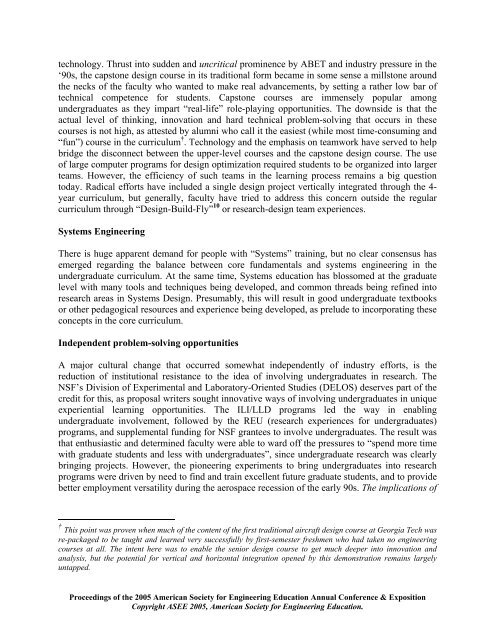
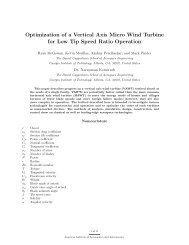
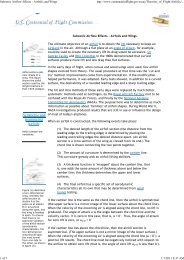

![p density of fluid, kg/m3 [Greek letter rho] V mean velocity of fluid, m ...](https://img.yumpu.com/50595898/1/184x260/p-density-of-fluid-kg-m3-greek-letter-rho-v-mean-velocity-of-fluid-m-.jpg?quality=85)
